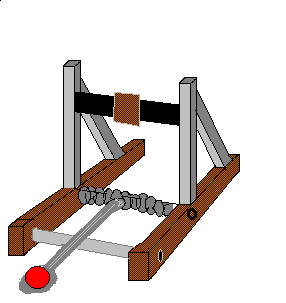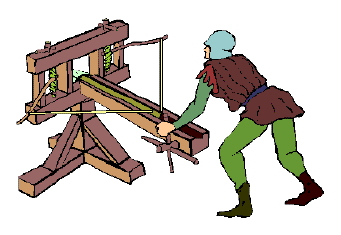How Does a Catapult Work?

The Ballista, the trebuchet and the catapult are all different types of technologies that fall under the category classified as the Catapult. When people normally hear the word catapult they think of a winched-down bucket that is attached to a long wooden beam. A ballista looks like a crossbow but it is magnified to be a lot larger. A trebuchet is a heavy beam that rotates a sling carrying a object that will be projected.
By storing tension either in twisted ropes or in a flexed piece of wood is how catapults and ballistas release a object to go far distances. An example of this could be a archery bow, but a catapult and ballistas would be in a larger scale.
 The easiest
type of catapult to build would have to be a trebuchet. The trebuchet consists
of a beam that pivots somewhere in the middle of the beam and has a counterpart
that rotates the beam through an arc.
The easiest
type of catapult to build would have to be a trebuchet. The trebuchet consists
of a beam that pivots somewhere in the middle of the beam and has a counterpart
that rotates the beam through an arc. So how far can catapults launch an object? Well catapults can hurl things a fair distance, they have been known to project a object 500-1000 ft. It is surprising how much energy a catapult, ballista, or a trebuchet can actually store. The gears of the system are important, because they create a winch. The winch allows a force to put a great deal of energy into the catapult over a period of time. Then all of the energy releases at once, throwing the projectile.